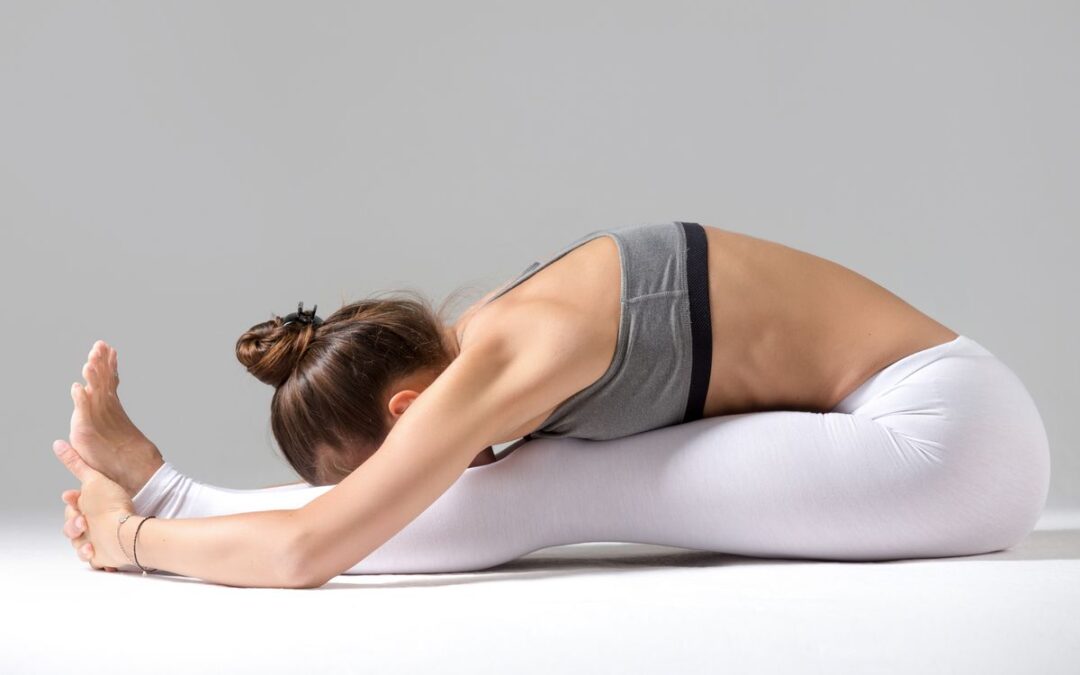Is it stretching or strength training? It sounds like a very simple question that most people feel they know the answer to, including professionals. I love it when clients come in and share with me the stretching they have done in the past, are doing currently, or what their friends told them to do for stretching. I always ask the question, is it stretching or strength training?
It is interesting that many believe it is stretching until I show why it is not. If you learn something today, it is not because you are not smart, as many professionals do not know the difference either. It is the way we have been taught about stretching our entire lives. Hopefully, by the end of this article you will have a better idea of what is stretching versus strength training.
What is Strength Training?
Strength training is making your muscles stronger through resistance. The resistance can be weights, rubber bands, rocks, and even your own body weight. The objective here is to add enough resistance to the muscle so that the muscle creates little micro-tears and grows larger and stronger as it repairs the tears. I am going keep this very basic here. You can build muscles larger and faster by using heavier weight and fewer repetitions. Or you can improve your stamina by lifting lighter weights and doing more repetitions or holding the weight for a longer period of time. Either way, the muscle will get stronger and increase its endurance. It depends on what you want the end result to be.
The purpose of strength training is to make you strong enough to support your bones, give you enough stamina to enjoy the things you love to do, and increase the density of your bones. Couple that with cardio workouts and you can improve your heart strength, lung capacity, brain function, and lose weight.
Strength training requires a mindset to push yourself through the sets of a workout when you would rather stop. This requires you to override the will of your brain and show the brain you can do it. Over time, your brain will allow the muscles to work with the resistance and soon you can add more resistance. It works the same in cardio as well.
What is Stretching?
Stretching is the elongation of muscles by releasing the tension in your body which allows for the lubrication of joints and discs, improves spacing in the joints, and improves compression on the discs, nerves, and blood vessels. Stretching should feel relaxing and meditative because you are releasing the tension mentally so you can release it physically. The brain plays a huge role in stretching as it is most difficult to release your muscles if your brain is filled with too many thoughts and emotions. Let me explain.
Too many times I see people trying to stretch and talk on the phone, thinking about things that have happened to them in the past, listening to fast-paced songs, or simply working too hard pulling their leg or arm attempting to make it go where they think it should be. You know, the old “No Pain, No Gain” theory. This is where stretching and strength training begin to diverge. In fact, whether you call it stretching or strength training doesn’t matter because what you are doing is strength training.
Stretching Needs a Very Different Mindset
Like I said earlier, strength training requires you to push yourself through a workout set to let the brain see it was safe. Stretching, on the other hand, is a mindset of relaxation and allowing the muscle to release. If I pull too hard, the brain thinks there is danger and will contract the muscle, especially if there is pain or discomfort.
Stretching is similar in the sense that once the brain sees you can move your body part in a specific direction for 5 seconds, it is most likely willing to allow you to do it again a few more times. Stretching is about releasing; strength training is about resistance, and that is where the problem arises.
What are the Mistakes in Stretching?
I have seen it a hundred times. Someone comes in with back pain, taking pain pills, been to PT, and maybe wearing a back brace. Their focus is on the back which is their first mistake as back pain is rarely a back issue. I will ask them to show what they have been shown for stretching exercises and almost every time, they will lie on their back, place both feet flat on the table with their knees pointing to the ceiling and begin lifting their hips. I could almost go through their routine with them before they ever speak, but it is a teachable moment. Think about that movement for a moment. You are lying on your back, knees up, and now you are lifting your hips up towards the ceiling. As your hips come up are you tightening the front of your thighs and hips to lift the weight of your hips? As you lift up, is your back loose or tightening to help out? Isn’t that resistance and isn’t resistance strength training? I thought the thinking was to lengthen the back muscles. Did you?
The other one I see is stretching the calves while sitting on the floor. You sit on the floor with one leg out in front of you. Next you reach out towards your toes to stretch out your calf. First you must engage your abs to reach your toes. This is good for the abs, but if you cannot reach your toes how is this stretching your calf? Even those of you who can reach your toes, most tend to hold on to the foot and love to touch their knee with their nose or chest. Again, this is good to tighten your abs and lengthen your back muscles, but weren’t you trying to stretch your calf?
I was listening to a stretch class online the other day and the trainer was telling people to tighten their abs and hips, lift their torso, and then stretch their hamstrings, all three at the same time. Again, stretching or strength training? You guessed it. This is strength training.
Stretching Well with Stretch n’ Release Technique
When stretching, take your time, breathe out as you are stretching the muscle, and most importantly, be sure you feel the muscle you are trying to stretch. You cannot stretch one area while tightening another consciously. If you are holding your breath, you are building tension, which is not good for stretching. Stretching is a daily thing. Think of your dog or cat–they stretch every day, several times a day. You should do the same, but don’t make it difficult.
My focus with the Stretch n’ Release Technique is to teach you how to do stretches while sitting at a stoplight, at home, or anywhere in the world you are. You do not need special clothes, a special room and equipment, or someone to walk you through it each time. All you need is a yoga strap or rope, tennis ball in a sock, and your hands. You are capable of doing it well with a little help in technique. Ultimately, you are the only person who can let your muscles relax. Your therapist is only a guide. You must do the work.
In using my technique, you are allowing the brain to release the muscles versus brute force that you see in many gyms and physical therapy. It takes practice, but once you get it, and you will, your body will feel more energized and vibrant.
Trunk Lateral Flexion
Stretching is more about feeling the muscles letting go than forcing them to stretch. If you are forcing the muscle, you could be doing strength training, not stretching. Make sure you are feeling the intended muscle stretching. If not, the form could be wrong. Holding for 5 seconds allows the brain to release the muscle before it senses any danger. Repeating the stretches 10 times allows the brain to learn it is safe for the muscle to move that way.
Trunk rotation
Don’t forget the Tennis Ball Massage!
Softening your hips and back is easy when you use the tennis ball. Just lean against the wall and apply enough pressure to feel the painful area. The temptation is to press harder but resist it. Instead, breathe out and allow the muscle to soften under the ball. Then move to another spot and repeat. Continue doing this until most of the painful spots are gone. Check out previous newsletters to see the video.
SUBSCRIBE to view all the videos that demonstrate Stretch n’ Release exercises to decrease your back pain dramatically.
Want to Talk with Me Directly? Start Here
We’re happy to offer you a complimentary 30-min virtual consultation so you can experience this for yourself. Schedule your introduction to Stretch n Release now.
About The Muscle Repair Shop
Drawing upon his personal experience as a former competitive athlete turned wheelchair, obese and chronic pain sufferer, Muscle Repair Shop Founder Butch Phelps decided to take his health into his own hands when at the age of 36 he was told he might not make it to his 40th birthday. Applying balanced nutrition advice from his doctor along with a sound exercise program, he went from 315 lbs. to 180 lbs. Motivated by his experience, he then acquired degrees in advanced therapeutic massage and aging sciences to help people eliminate chronic pain. This included applying his expertise in how people age, including the effects of dementia, anatomy, psychology, and the day-to-day struggles living as an older person to his practice and development of The Muscle Repair Shop’s one-of-a-kind Stretch n’ Release Technique.
Available through in-office and virtual coaching treatment sessions, this unique combination of stretching and breath work teaches the brain to release the emotional side of muscle tension and pain allows clients to find lasting relief and healing from stiffness, aches, injuries, and chronic pain. The at-home exercises come with customized instructional videos and virtual or in-office support, allowing clients to enjoy and experience life and sports as they did before limitations slowed or curtailed activities.


